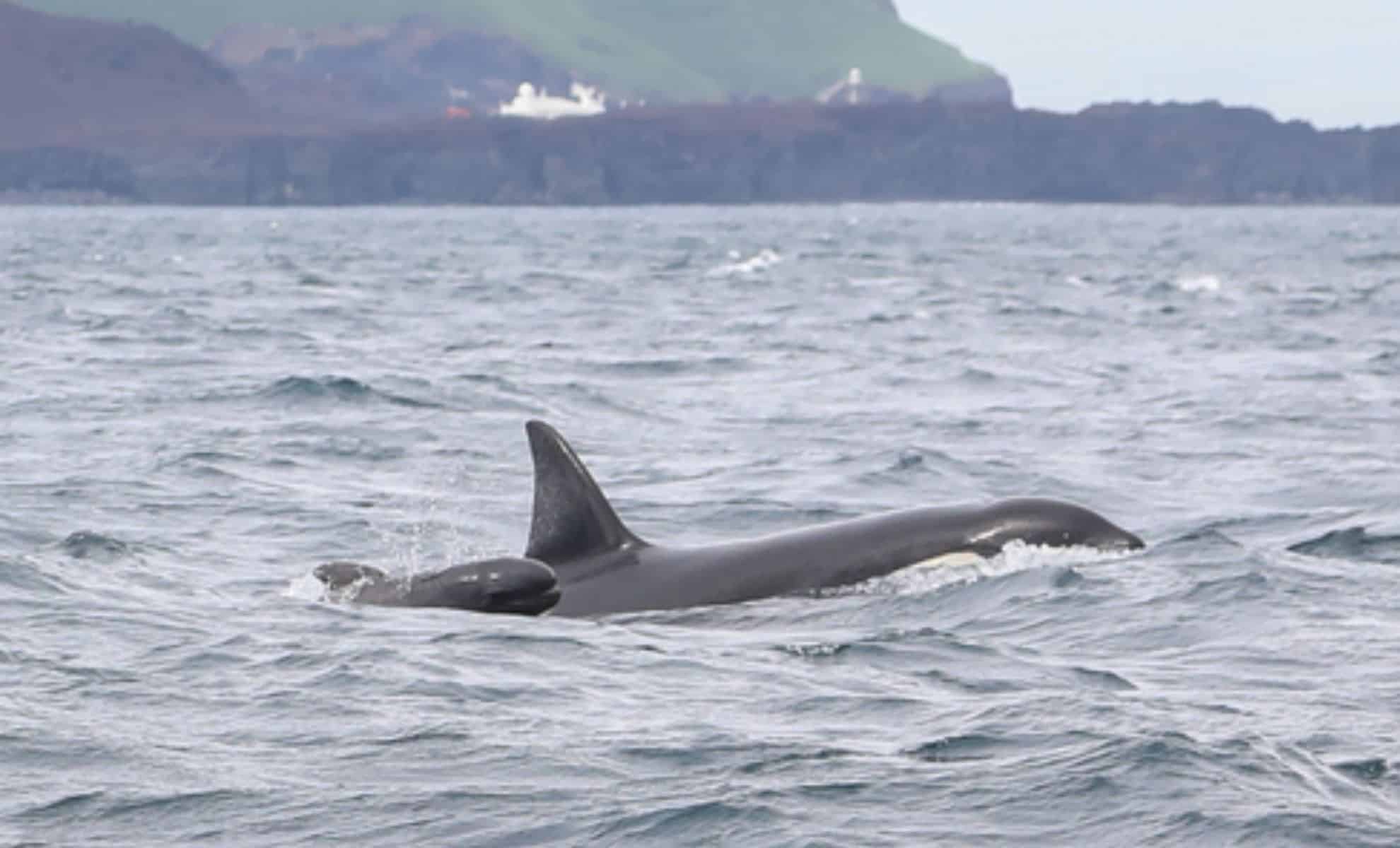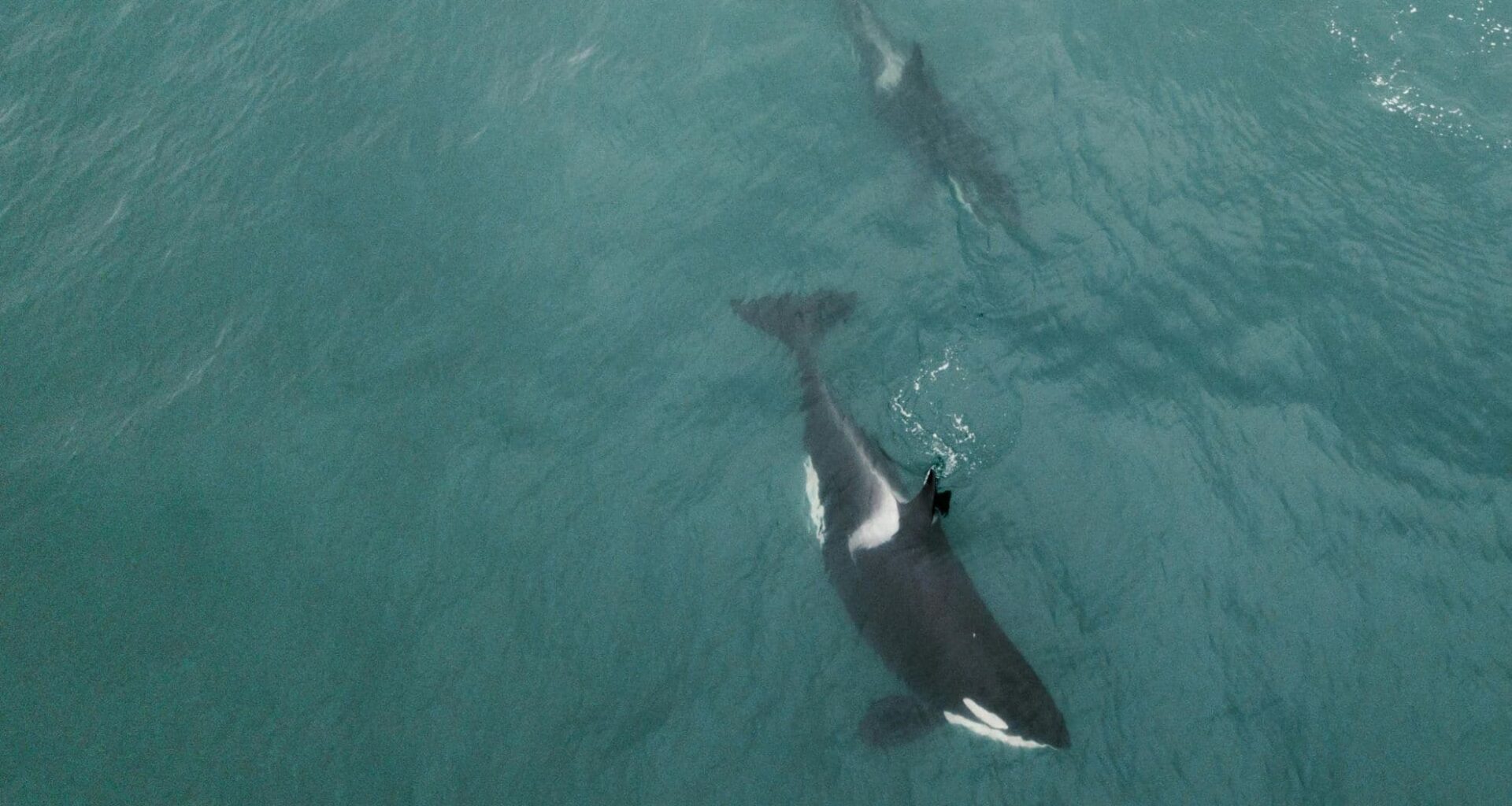Off the rugged coast of Iceland, an extraordinary and puzzling phenomenon has captured the attention of marine scientists. Over the past few years, baby pilot whales—tiny and vulnerable—have been spotted swimming alongside pods of powerful orcas. But what happens to these calves after their mysterious encounters remains unknown. Are they lost, abandoned, or falling victim to their intimidating companions? Researchers are racing to uncover the truth.
Orcas Seen With Tiny Pilot Whale Calves
In June 2022, Chérine Baumgartner, a researcher at the Icelandic Orca Project, witnessed an unusual sight while observing killer whales feeding on herring off the coast of Iceland. Among the pod, she noticed what appeared to be a tiny, unfamiliar calf lacking the typical black-and-pale-orange coloration of orcas.
“At first, we were like, ‘Oh my god, this killer whale calf has a problem,’” Baumgartner recalled. Upon closer observation, she realized the young animal was not an orca but a baby long-finned pilot whale. This encounter lasted nearly three hours before worsening weather forced the team back to shore. When they returned the following day, the pilot whale calf was gone.
Scientists have observed similar interactions between orcas and pilot whale calves off Iceland every year from 2021 to 2023. These brief encounters always involved different individual pilot whale calves—dark-gray dolphins with bulbous foreheads—and distinct orca pods. Baumgartner and her colleagues detailed these observations in a new study published in Ecology and Evolution.

Credit: Josephine Schulze
Orcas And Pilot Whale Calves Swimming Closely
In every sighting, the weeks-old pilot whale swam in an “echelon position,” a formation beside and slightly behind a female killer whale. The orcas occasionally nudged the calves along, and during the 2023 encounter, one calf was seen swimming ahead of the group, perhaps trying to escape. At one point, an orca lifted a calf belly-up out of the water on its back, an image that captured the researchers’ attention.
The possibility that orcas might treat pilot whale calves as “living lunch boxes” was considered. Some Icelandic orcas are known predators of harbor seals and porpoises, leading to speculation they could prey on the young pilot whales.
However, Baumgartner pointed out that the orcas in these observations primarily eat fish and showed no clear aggressive behavior towards the calves, making predation an unlikely explanation, though it cannot be fully ruled out.
How Orcas Might Use The Calves In Their Behavior
A theory suggests that the killer whales might engage in playful behavior or use the pilot whale calves to practice hunting techniques. Icelandic orcas are known for herding herring, and the presence of the calves could be part of such coordinated hunting activities. Baumgartner explained, “It could be [that the orcas] encountered the pilot whale opportunistically, and some individuals played with the whale, and others tried to nurture it.”
Alternatively, these encounters might reflect a form of parental care. While whales and dolphins often care for the young of their own species, instances of cross-species care have been recorded. Though the researchers hesitate to describe this relationship as adoption because it is brief, and the orcas were not lactating, nurturing instincts could play a role in these interactions.
What Really Happens To These Baby Whales?
A major mystery remains around how orcas find these young pilot whales and what ultimately happens to the calves. Filipa Samarra, principal investigator at the Icelandic Orca Project, raised key questions: “Was it lost or abandoned? Or did the killer whales actively approach to take the calf away?” The team also wonders whether the calves survive, escape, or fall victim to the orcas.
Sarah Teman, an ecology graduate student at the University of Washington who was not involved in the study, expressed amazement at the images of pilot whales swimming with orcas. Drawing comparisons to her own research, “seemed to be largely driven by nurturing or play behavior, just as had been seen in the southern resident killer whales’ interactions with porpoises.”

Credit: Filipa Samarra
Samarra suggested that climate change might influence these unusual encounters. Pilot whales increasingly follow schools of mackerel migrating into warmer waters that overlap with orca habitats. Her team aims to observe next summer how these pilot whale calves become involved with orca pods and what their fate will be.
